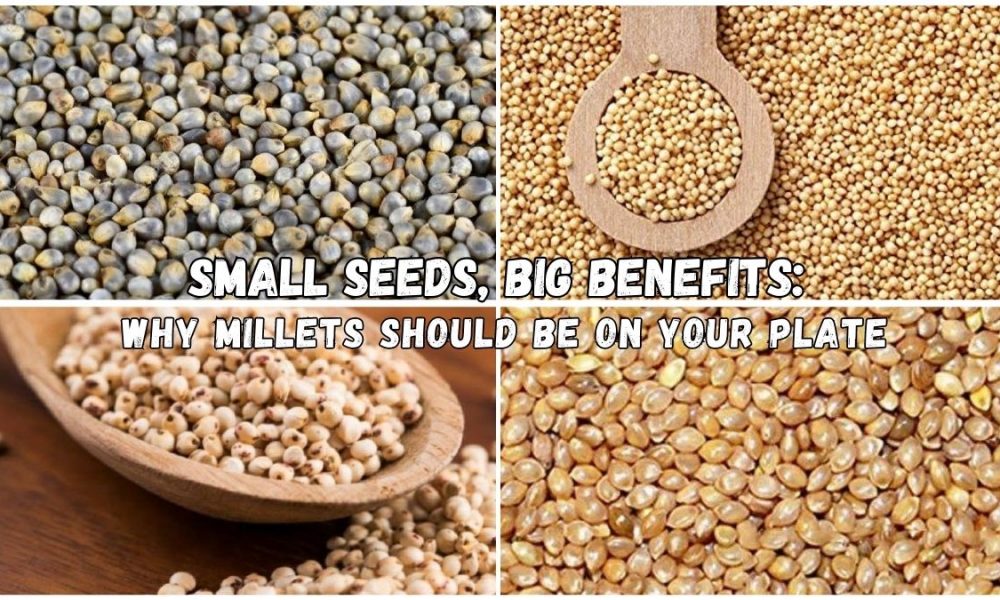
New Delhi: Millets are a diverse group of small-seeded grasses known for their higher nutritional value compared to other grains and foods. They are widely cultivated worldwide as cereal crops or grains. Millets serve as an excellent source of protein, fibre, essential vitamins, and minerals, making them a valuable addition to any diet.
Let’s explore the types of millets and their unique benefits:
1. Jowar (Sorghum):

Jowar, the most popular millet in India, is enriched with iron, protein, and fibre. Consuming jowar can aid in reducing cholesterol levels due to its component called policosanols. In Maharashtra, many people include jowar in their daily diet to maintain stable blood sugar levels and promote gut health.
2. Pearl Millet (Bajra):

Bajra is known for its health benefits, containing iron, protein, fibre, calcium, and magnesium. Including bajra in your daily diet can work wonders for your overall health.
3. Finger Millet (Ragi):

Ragi serves as a healthy substitute for rice and wheat, packed with essential nutrients like protein and amino acids. Moreover, it helps regulate body heat, being gluten-free and beneficial for children’s brain development.
4. Foxtail Millet (Kakum/Kangni):

Foxtail millet, also known as kakum or kangni, offers healthy blood sugar balancing carbohydrates, iron, and calcium. It is usually available in the form of semolina and flour.
5. Rajgira (Amaranth):

Rajgira, or Amaranth, is abundant in protein, calcium, minerals, and antioxidants. It contributes to preventing hair greying, hair fall, and lowers cholesterol and cardiovascular disease risks. In Maharashtra, it is commonly consumed during fasting.
6. Buckwheat (Kuttu):

Although mainly consumed during fasts, buckwheat can be added to your weight loss diet due to its beneficial properties. It aids in weight loss, supports cardiovascular health, reduces blood pressure, helps prevent cancer, and can be beneficial for childhood asthma.
While these millets are easily available and offer numerous health benefits, it’s essential to be mindful of antinutrient compounds present in them, which can hinder nutrient absorption and lead to deficiencies if overconsumed. Additionally, some millets may not be easily digestible, and individuals may be allergic to certain types. As a precaution, it is advisable to introduce millets gradually into your diet, ideally consuming them 2-3 times a week at the beginning.
In conclusion, incorporating millets into your diet can be a wise choice due to their impressive nutritional value and health benefits. These diverse small-seeded grasses offer protein, fibre, essential vitamins, and minerals, making them a valuable addition to your meals. From jowar to buckwheat, each millet brings its unique advantages, promoting overall well-being and supporting various aspects of health, such as cholesterol management, blood sugar regulation, and cardiovascular health. However, it is crucial to be mindful of antinutrients, potential allergies, and digestive considerations, consuming millets in moderation for optimal results. Embrace the goodness of millets in your diet, reaping their nutritious rewards while savouring their delicious versatility.




